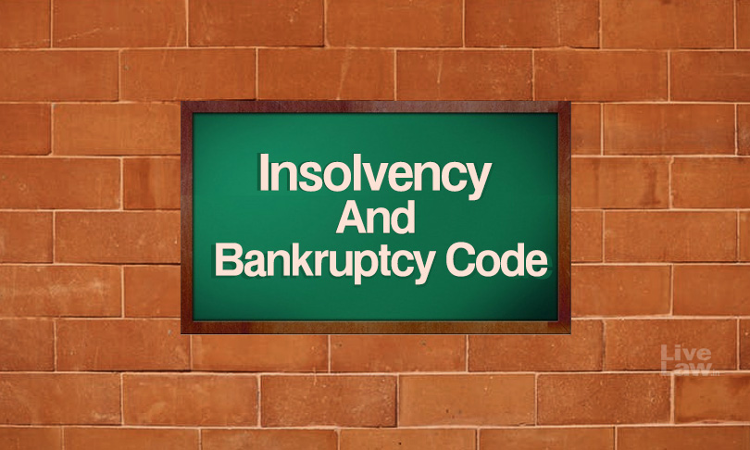Impact Of Raising IBC Threshold On Operational Creditors
Kaustubh Srivastava & Devansh Rathi
24 March 2020 7:57 PM IST
On 24th March, 2020, Government of India decided to raise the threshold for the determination of the default from Rs 1 lakh to Rs 1 crore in the light of the recent pandemic outspread of novel coronavirus disease Covid-19, in order to help and aid the functioning of the small companies and MSMEs which might face the threat of defaults owing to the lockdown. This decision has also...
On 24th March, 2020, Government of India decided to raise the threshold for the determination of the default from Rs 1 lakh to Rs 1 crore in the light of the recent pandemic outspread of novel coronavirus disease Covid-19, in order to help and aid the functioning of the small companies and MSMEs which might face the threat of defaults owing to the lockdown. This decision has also clarified the intention of the Government to aid the small business owners and companies to survive the economic backlash of the spread of the pandemic. The Finance Minister Nirmala Sitharaman further suggested that if the situations prevailing in the country change for the worse in the near future, the Government will consider suspending Sections 7, 9 and 10 of the Insolvency and Bankruptcy Code (IBC) for next 6 months. This is an appreciable step in the direction of helping the companies being forced into the insolvency proceedings on default of loans.
One of the indispensable requisites for an applicant to invoke the relevant provisions of the code is that there should be a minimum amount of default. Hitherto, the minimum amount of default was Rs 1 Lac in furtherance of which any creditor could avail the Code. But this amount has been increased to Rs 1 Cr. Section 4 of the Code reads as –
"4. Application of this Part. – (1) This Part shall apply to matters relating to the insolvency and liquidation of corporate debtors where the minimum amount of the default is one lakh rupees:
Provided that the Central Government may, by notification, specify the minimum amount of default of higher value which shall not be more than one crore rupees."
The change is announced for the welfare of the SME's who were facing threats of being exposed to insolvency due to their non-functioning at their optimal level due to the pan-India lockdown. In that sense, the move is laudable. However, it seems that it is coming at the detriment of their operational creditors. The effects of the both, the step already in immediate effect, and the prospective suspension of the sections, which enable the Creditors and the Debtor to initiate the Corporate Insolvency Resolution Process (CIRP), can have unfavorable impacts and an alternative could have made things slightly easier.
Plight of Operational Creditors:
It is common knowledge that MSMEs and small companies have loans of little quantum as compared to MNCs or any other large corporations. At such instances the debt owed by the debtor to the Financial Creditor is monetary in nature in the form of loans, whereas, the Operational Creditors, who themselves are more often than not small companies or businesses in the context of MSMEs, lend the operational debt to the Debtor which is of even smaller quantum. The Operational Debt would majorly be less, and may not meet the raised threshold. This means that these operational creditors will not be able to bring in the actionable claim against the default that would have previously been qualified under the threshold of Rs 1 lacs .
Since SME's are small businesses with limited number of employees and capital, it won't be erroneous to assume that their creditors, especially the operational creditors would render them the basic raw materials or goods and services etc. at loans which are significantly miniscule as compared to their financial creditors. Small enterprises in the manufacturing and service sector have capital investment of 25 lacs to 5 crores and 10 lacs to 2 crores respectively.
In such a case, raising the amount of default would hamper the rights of the operational creditors to invoke the Code, particularly under section 9 as the requirement of section 4 would be left unfulfilled.
This seems to be against the purpose and the objective of the code, as clarified in the Swiss Ribbons case as, "…to promote entrepreneurship, availability of credit and balance the interests of all the stakeholders…" The interest of the Operational Creditors as one of the stakeholders is getting significantly harmed in the prima facie understanding of the notification.
The Suitable Alternative
The more pragmatic of the solutions forwarded by the government at this stage would have been the suspension of provisions dealing with triggering of insolvency. Instead of raising the threshold of the determination of default, which impairs an entire class of creditors from raising a hitherto legitimate claim, the Government could have just suspended the relevant sections of IBC like Section 7, 9 and 10 for time period and could have relaxed the Limitation Period applicable on defaulters and the creditors in the given scenario.
That would have been a more fair and pragmatic method of ensuring protection to small businesses.
(The authors are are 3rd Year students enrolled in B.A. LLB. Hons., Dr Ram Manohar Lohiya National Law University, Lucknow. Views are personal)


